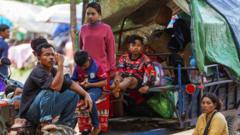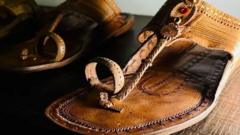In Romania, the folk blouse, or "ie," has assumed unexpected political significance as nationalist figures adopt it as part of their identity. This traditional garment, often adorned with intricate embroidery, has garnered celebrity attention, worn by artists like Adele and showcased by fashion houses such as Louis Vuitton. However, its appropriation by right-wing politicians like Diana Sosoaca and George Simion has sparked fierce debate. Sosoaca, a prominent far-right figure, frequently dons the blouse, while Simion, who recently lost a presidential bid, also aligns his campaign with this cultural symbol.
Călin Georgescu, another ultranationalist politician, previously incorporated the blouse into a visually arresting campaign via TikTok, riding a horse while wearing it, embracing the blouse's cultural roots to rally an audience around national pride. This trend reflects a growing movement among nationalist groups to use traditional garments to express their devotion to Romanian culture.
While many locals appreciate the blouse as a vital heritage piece, critics argue that its politicization represents a troubling appropriation of shared cultural identity, suggesting that such attire transcends political divides and belongs to all Romanians. Artisan practices related to crafting the blouse often require months of painstaking work, reflecting a rich heritage that many argue should not be reduced to mere political symbol. The ongoing discourse reveals the tension between cultural pride and political opportunism, highlighting the blouse's journey from village to the public eye, and posing questions about who truly owns cultural narratives in a diverse society.
Călin Georgescu, another ultranationalist politician, previously incorporated the blouse into a visually arresting campaign via TikTok, riding a horse while wearing it, embracing the blouse's cultural roots to rally an audience around national pride. This trend reflects a growing movement among nationalist groups to use traditional garments to express their devotion to Romanian culture.
While many locals appreciate the blouse as a vital heritage piece, critics argue that its politicization represents a troubling appropriation of shared cultural identity, suggesting that such attire transcends political divides and belongs to all Romanians. Artisan practices related to crafting the blouse often require months of painstaking work, reflecting a rich heritage that many argue should not be reduced to mere political symbol. The ongoing discourse reveals the tension between cultural pride and political opportunism, highlighting the blouse's journey from village to the public eye, and posing questions about who truly owns cultural narratives in a diverse society.


















